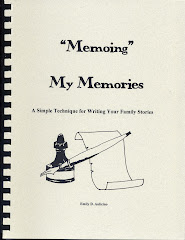Edit Is a Four Letter Word, con't
The letter D is for:
Draft as many versions as needed for clarity
Part 1: Edit by Reducing
Editing takes time as I have stated. Even if you choose to write only a couple of drafts and call the last one your final, it is wise to leave several days between each draft. This allows you to get a different perspective on your story. You get a fresh new look at it if you put it aside. This will help you find questionable areas and help you discover how they may be corrected.
The purpose in editing is to make your ideas clear to your reader. There are many methods to editing for clarity, so try one at a time. Remember, draft as many versions as needed for clarity. Do not mentally state you will do only two drafts before you ever begin, but leave that door open. In doing so, you will find the light at the end and be happier for it.
The following method of editing is only one way and will be presented here in three separate sections due to the length of information. The idea of editing is to first remove chunks of text that do not fit the story or chapter. Then to gradually fine tune each paragraph, each sentence, and then your words and phrases. By looking at the large picture first and narrowing your scope, you reduce your work. Remember, editing takes time, but you’ll love the finished product as will your readers.
The major steps for this section are as follows:
Part 1: Edit by Reducing
Part 2: Edit by Rearranging
Part 3: Edit by Rewording
Remember: You write for yourself; you edit for others.
Part 1: Edit by Reducing
Nonprofessional writers are excited to see so many words on a page; however, the professional is pleased to cut their writing into precise text. It is the quality of the words, not quantity that separates the novice from the pro.
When we write we tend to record everything we can recall on the subject or situation. Writing in this manner helps us remember better, and often we are either jotting facts in the margins or writing sentences out of order as more pops into our minds. This often leads to excessive information that hampers the flow of the story.
In your first revision, look for chunks of verbiage that are not needed. How do you find these chunks to remove? Ask yourself if these pieces actually move the story forward. It is very difficult for the novice to remove parts of the story, but save these chucks as they may be revived later for another story or included in this one after alterations.
After removing the larger chunks, focus on the remaining parts and rewrite to smooth any evidence of your splicing and dicing. The reader must not realize you have eliminated sections, but see only a smooth flow of ideas.
The following is an example of reduction:
Original:
The restaurant was set back from the road approximately 100 feet. There was parking on both sides of the restaurant and the area set aside for parking was separated by an area of well-kept grass.
Revised:
The restaurant was set back bout 100 feet, with parking on both sides of the well-kept lawn.1.
As you repair your writing, stitching the story together, you may notice other smaller reductions which are necessary. However, do not complete these reductions at this time. Flag them in some way and return to this job later. Think of this as cleaning out the attic. You can only throw away so much at a time and must stop for fear of tossing something you may later regret. Putting time between your reductions will give you a better perspective on what is really needed.
Once you are ready to continue reduction, look at individual words to see if a larger word is less precise than a more simple word. The goal is clarity and accuracy of meaning. Each word has a slightly different meaning and the writer needs to use the most precise word possible.
As we scrutinize our writing we will find unnecessary words and phrases. For example, instead of writing, “…was very comprehensive in nature,” drop the in nature. Those words do not alter the meaning.
Next, the letter D (part 2 of 3) in that four letter word Edit.
D stands for: Draft as many versions as needed for clarity.
Part 2 covers Edit by Rearranging
Source (adapted from):
Cheney, Theodore A. Rees. Getting the Words Right: How to Revice, Edit & Rewrite, Writer’s Digest Books, Cincinnati, OH, 1987.
1. Cheney, p. 33.
©Aulicino 5 Dec 2008
Subscribe to:
Post Comments (Atom)









No comments:
Post a Comment